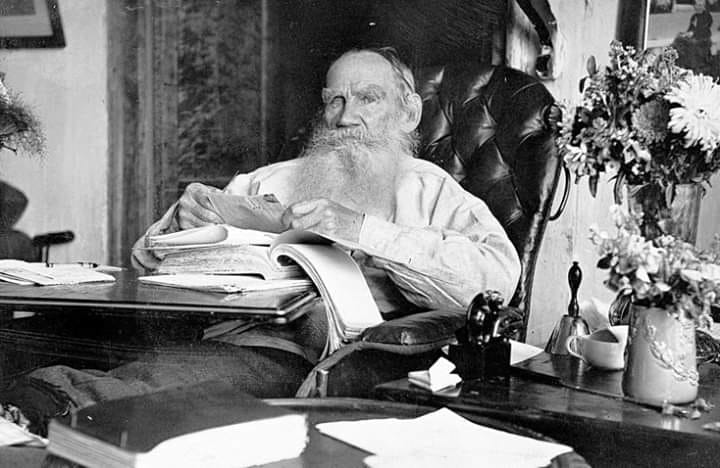
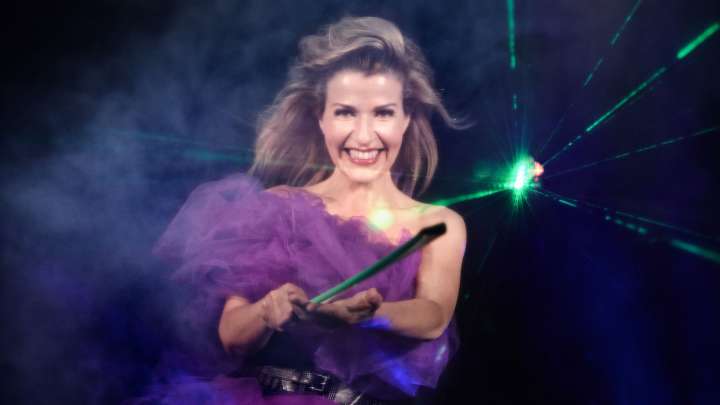
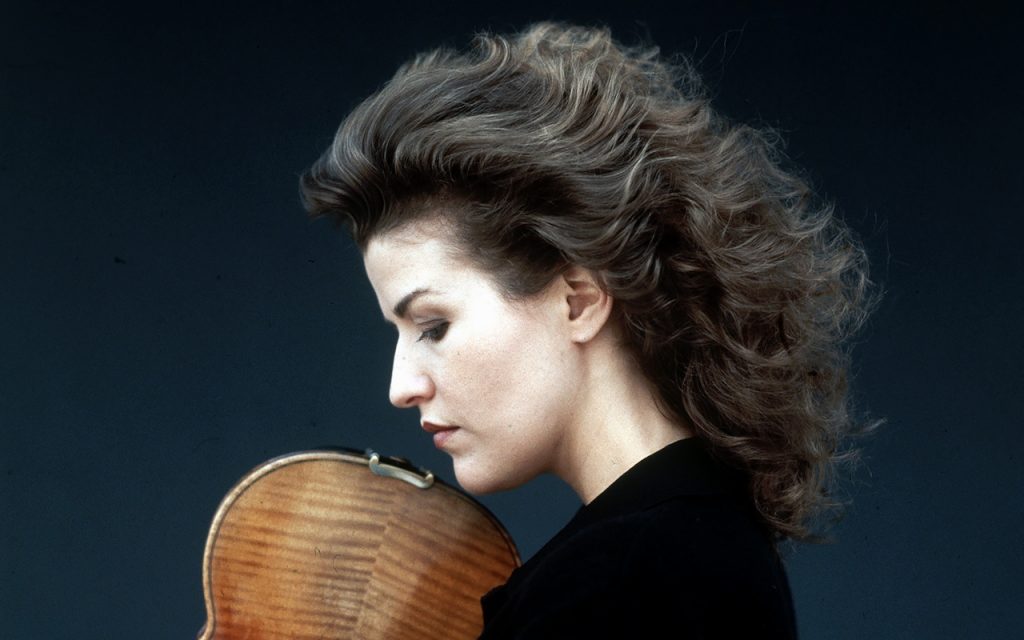
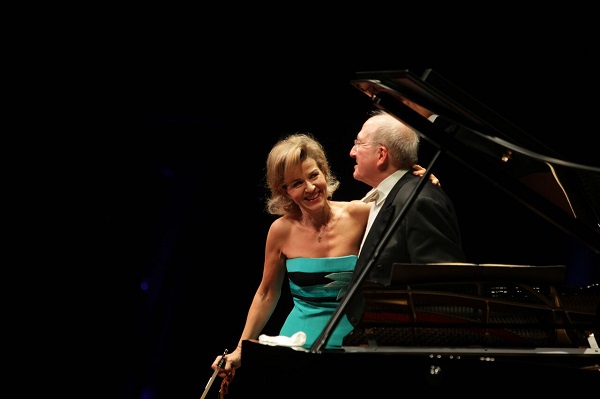


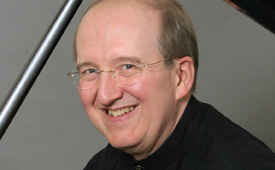
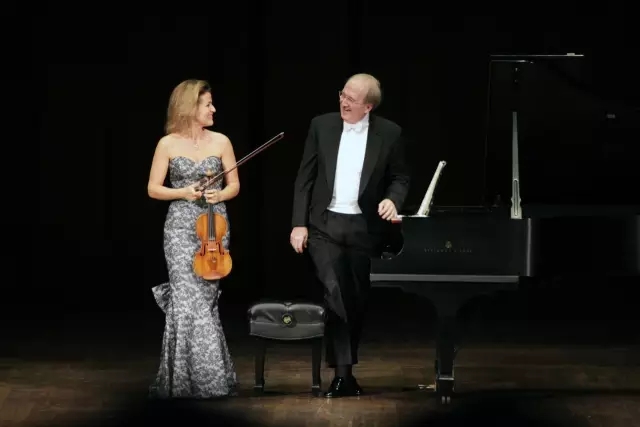
TOLSTOY & BEETHOVEN’ S KREUTZER SONATA
LvB – Violin Sonata No 9, Op. 47 is a sonata for piano and violin / commonly known as the Kreutzer Sonata after the French violinist Rodolphe Kreutzer ( 1766 – 1831 ) – who was considered the finest violinist of the day – who it was ultimately dedicated, but who throughly the piece refused to play it. * The great Russian writer Leo Tolstoy / Lev Nikolayevich Tolstoy ( 1826 – 1910 ) was inspired by Beethoven’s Kreutzer Sonata. He wrote a novella titled KREUTZER SONATA ( 1889 ). – He was particularly moved by the sonata’s 1st movement, where Beethoven depicts his rebellious angst. The rest of the work was not of much interest to Tolstoy. He called the second movement ” common and unoriginal “, and the finalle ” very weak “. How wrong Tolstoy was ! ( The lovely 2nd movement was a big hit at the work’s premiere and the tarantella-like third movement provides a brilliant end to this amazing work ). * LvB – ” Kreutzer ” / by Anne Sophie Mutter & Lambert Orkis Zohari
Artist Biography of Lambert Orkis by Joseph Stevenson
Lambert Orkis is one of the most respected American pianists, particularly in the fields of chamber music and accompaniment, and as a proponent of modern piano music. He studied with Eleanor Sokoloff at the Curtis Institute of Music in Philadelphia. After obtaining his degree there, he went on to obtain a master’s degree from the Esther Boyer College of Music of Temple University (also in Philadelphia), where his teacher was Maryan Filar. He joined the Philadelphia Chamber Soloists, the Penn Contemporary Players of the University of Pennsylvania, and the Twentieth-Century Consort in Washington, D.C. Another early musical association was with the Temple University Music Festival and Institute, and he has maintained a recital partnership since those days of the early 1970s with cellist Barbara Haffner, a fellow member of the Philadelphia Chamber Soloists. He has been a member of piano faculty of the Boyer College of Temple University since 1968. As a teacher he stresses the teaching of modern repertory to his students and concentrates on chamber music performance.
Early in his career, Orkis was the chosen accompanist of legendary American soprano Eleanor Steber when that former star made her successful comeback concert and established a second career. Since Steber was especially interested in American art song and opera, he found himself developing a major interest in new American music, which led to his commissioning many new works from major composers. A very partial list of such compositions includes Richard Wernick‘s Piano Concerto, George Crumb‘s A Little Suite for Christmas, and works by James Primosch and Maurice Wright.
In the late ’70s he served as pianist in a master class conducted by members of the National Symphony Orchestra of Washington, D.C., of which famed cellist-conductor Mstislav Rostropovich was then music director. Rostropovich was so taken with Orkis‘ playing that he invited the pianist to become his recital pianist and created the position of principal keyboard player of the orchestra for him. In the latter capacity Orkis plays piano, celesta, harpsichord, and synthesizer. He found that there was a difference between playing as part of the general lush orchestral sonority and of playing as a concerto soloist in front of an orchestra. Calling it a “thrilling experience,” he said he is challenged by the different skills such a position requires when compared to solo or chamber music work and says it “…helps me maintain razor-sharp listening and flexible reaction abilities.” He retained that position when Leonard Slatkin succeeded Rostropovich as music director.
As Rostropovich‘s partner, the two played in the U.S. and Asia, including performances before presidents Reagan, George Bush, and Clinton, King Hussein of Jordan, Emperor Akahito of Japan, and President Gandhi of India. In 1988, Orkis also formed a performance partnership with violinist Anne-Sophie Mutter, which he called “a pinnacle of my professional life and a continual source of artistic fulfillment.” With her he has also performed before major world leaders, including the presidents of France and Germany, the Queen of Spain, and the King and Queen of Sweden. In 1998, the two gave 85 performances, playing all ten Beethoven violin sonatas exclusively, then recorded the cycle in live concerts in Wiesbaden, Germany. This Deutsche Grammophon recording won the NPR Performance Today Critics’ Choice Award.
He is also a member of the Castle Trio, a major chamber group associated with the Smithsonian Institution in Washington, playing on instruments from the Smithsonian collection that are appropriate to the era of the music and has recorded on fortepianos. https://www.smithsonianchambermusic.org/about/artists/lambert-orkis
Anne-Sophie Mutter
For more than 35 years, Anne-Sophie Mutter has sustained an extraordinary musical career.
 The young violin prodigy Born in West Germany in 1963, Mutter first wanted to play the violin after listening to an album of the Mendelssohn and Beethoven violin concertos that her parents had given to each other as an engagement present.
The young violin prodigy Born in West Germany in 1963, Mutter first wanted to play the violin after listening to an album of the Mendelssohn and Beethoven violin concertos that her parents had given to each other as an engagement present.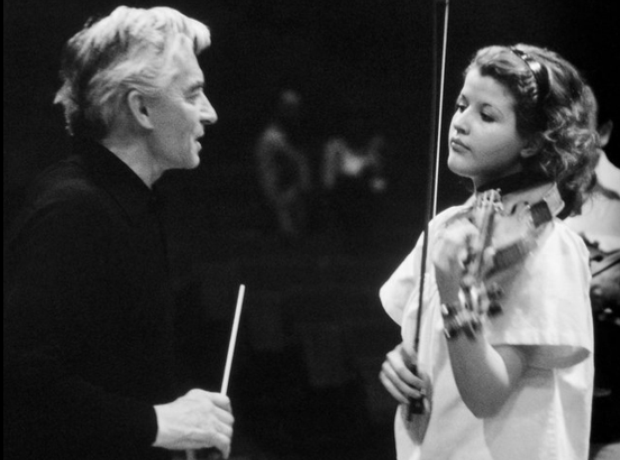
- A legendary mentor At the age of 13, Mutter was invited by the conductor Herbert von Karajan to play with the Berlin Philharmonic. They worked together until his death. “He knew just how far he could push a young musician and also the orchestra,” she has said in interviews. “He would always push you to the edge of what you could comprehend at that very moment; what you were physically able to bring to the performance.”Young performer and recording artistAt 14, Mutter made her debut at the Salzburg Festival with the English Chamber Orchestra under Daniel Barenboim and at 15 made her first recording of Mozart’s Third and Fifth Violin Concertos, with von Karajan and the Berlin Philharmonic.
 .
.- U.S. debut Mutter gave her first performance in the United States in 1980 with Zubin Mehta and the New York Philharmonic, performing Mendelssohn’s Violin Concerto. Two weeks later, she appeared with the National Symphony Orchestra in Mozart’s Third Violin Concerto with Mstislav Rostropovich conducting.
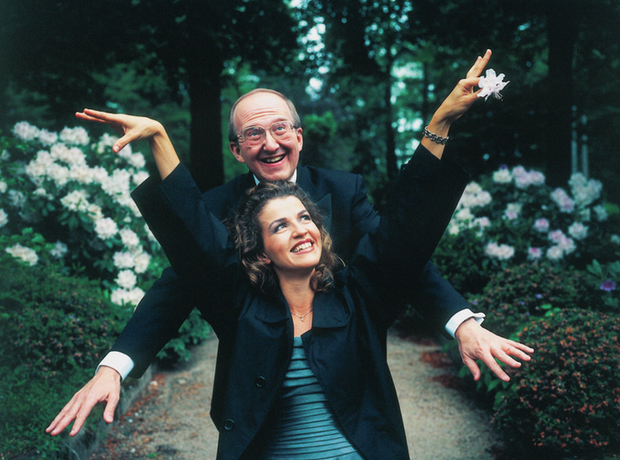 .
. - Accompanying partnerMutter made her Carnegie Hall debut in 1998. Accompanied by pianist Lambert Orkis, she performed a program of Franck, Tartini, Beethoven, and Ravel. Over the past 25 years, Mutter and Orkis have appeared together on concert stages all over the world.
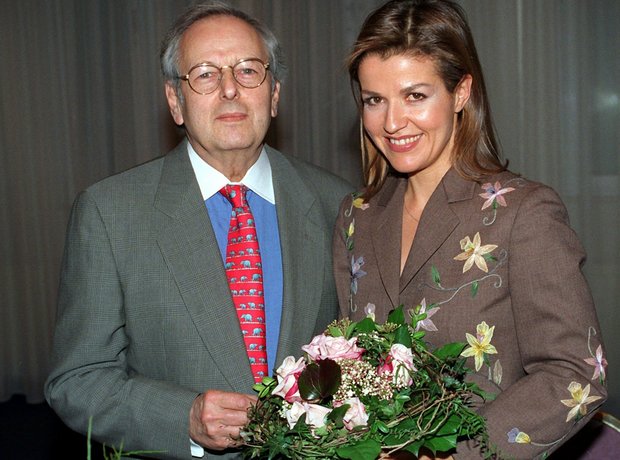 . Marriage to PrevinIn 1989, Mutter married Detlef Wunderlich, with whom she had two children. He sadly died six years later. In 2002, she married the conductor André Previn. They divorced in 2006 but continue to work regularly together. “Never have I worked with anyone as diversely gifted,” Mutter has said of Previn (pictured).
. Marriage to PrevinIn 1989, Mutter married Detlef Wunderlich, with whom she had two children. He sadly died six years later. In 2002, she married the conductor André Previn. They divorced in 2006 but continue to work regularly together. “Never have I worked with anyone as diversely gifted,” Mutter has said of Previn (pictured).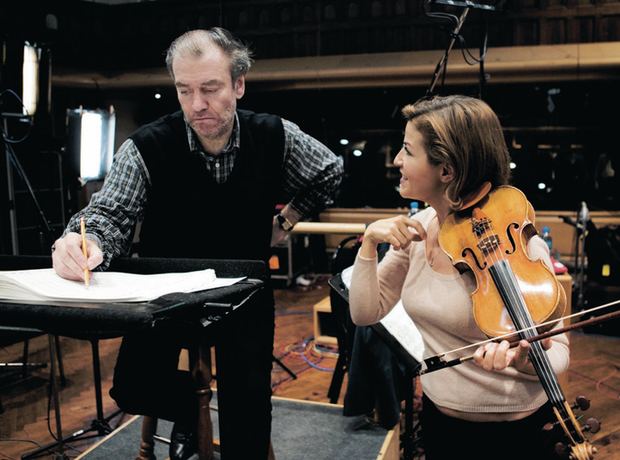 .A Champion of contemporary music A number of pieces have been specially written for or dedicated to her, by such celebrated contemporary composers as Dutilleux, Penderecki and Lutosławski. She is pictured here at the 2008 recording of Sofia Gubaidulina’s Violin Concerto, “In tempus praesens,” with conductor Valery Gergiev.
.A Champion of contemporary music A number of pieces have been specially written for or dedicated to her, by such celebrated contemporary composers as Dutilleux, Penderecki and Lutosławski. She is pictured here at the 2008 recording of Sofia Gubaidulina’s Violin Concerto, “In tempus praesens,” with conductor Valery Gergiev.- fan of SchubertMutter believes Schubert’s Fantasie in C major to be the greatest piece ever written for violin and piano. “It’s so difficult,” she has said. “It’s so difficult and for each of us we have to be so together, so much in synch…”
- . Jazz, movies and operaMutter counts jazz singer Ella Fitzgerald’s albums among her favourite records, along with Korngold’s film soundtracks and the Pavarotti-Freni recording of Puccini’s La Boheme.
- An avid readerAnne-Sophie Mutter is a keen reader. She loves Russian writers and says she often returns to tragic novels about powerful women – “women who lived their lives with passion and by being different from society,” she has said.
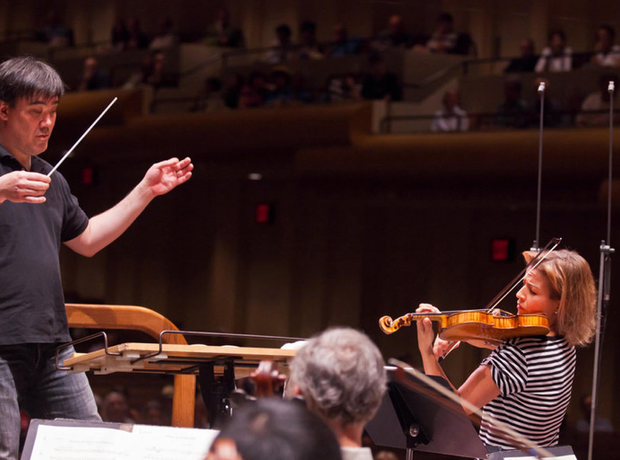 . No sign of slowing downIn October 2006, Mutter reportedly indicated that she would be retiring when she turned 45 in 2008. However the following month she said that her words were ‘misinterpreted’ and that she would continue to play as long as she felt she could ‘bring anything new, anything important, anything different to music.’ https://www.classicfm.com/artists/anne-sophie-mutter/guides/facts/box-set/
. No sign of slowing downIn October 2006, Mutter reportedly indicated that she would be retiring when she turned 45 in 2008. However the following month she said that her words were ‘misinterpreted’ and that she would continue to play as long as she felt she could ‘bring anything new, anything important, anything different to music.’ https://www.classicfm.com/artists/anne-sophie-mutter/guides/facts/box-set/
